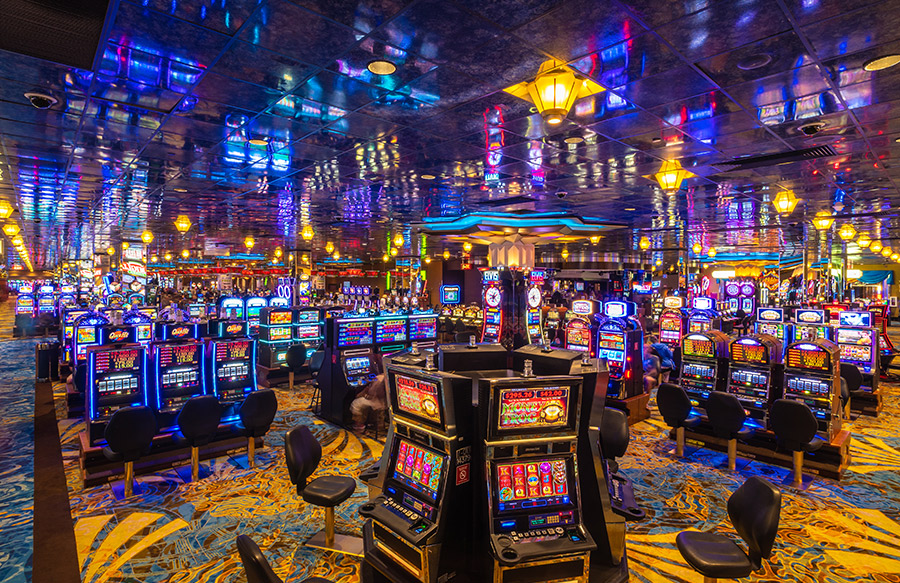
Within the vibrant and exciting world of casinos, where luck and strategy intertwine, color and aesthetic play a critical role in attracting players. https://78win01.cfd/ From the moment players step inside a casino or access a gaming platform, they are enveloped in a sightly feast that grabs their attention and entices them to explore more. Vivid colors, captivating graphics, and creative layouts are meticulously crafted to create an environment of thrill and anticipation, ultimately enhancing the gaming encounter.
As gamblers move through the dynamic landscape of casino games, they come across a range of designs that not only serve aesthetic purposes but also influence feelings and decision-making. Colors like scarlet and yellow symbolize riches and luck, while calm blues and emeralds can create a more tranquil environment. Grasping how these elements work together enables casinos to create an inviting and stimulating atmosphere that encourages players to engage with the games, invest additional time at the tables, and boost their overall enjoyment.
The Study of Tint in Gaming Establishments
Hue plays a crucial role in the creation of gambling games, influencing players’ feelings and behaviors. Lively and striking shades, such as scarlet and amber, are often used to incite enthusiasm and capture attention. These colors create a sense of pressure and dynamism, encouraging players to involve themselves more enthusiastically with the game. By strategically selecting hues, designers aim to elicit emotions of satisfaction and excitement, which can enhance the overall player experience.
Distinct hues also have psychological connotations that can impact how players perceive their possibilities of success. For example, green is commonly associated with luck and wealth, making it a frequent choice in games like the roulette wheel and poker tables. This connection can lead participants to feel more positive and self-assured in their play, ultimately encouraging them to wager more. Grasping these links allows game developers to design environments that enhance player enjoyment and engagement.
Furthermore, the design of gaming interfaces often utilizes gradients and contrasting hues to direct player actions. For case, successful outcomes may be highlighted with bright, contrasting colors, creating a visual cue. This technique reinforces favorable outcomes and promotes repeated gameplay. 78WIN By utilizing the psychology of color, gambling establishments can design activities that not only attract participants but also hold them involved and invested in their gaming experience.
Design Features that Attract Players
The aesthetic appeal of casino games is primarily influenced by the use of vibrant colors. Lively and contrasting colors are strategically chosen to create an inviting atmosphere that grabs attention. For instance, reds and golden hues often signify luck and wealth, which is why they are prevalent in the color schemes of slot machines and game surfaces. These colors not only attract players in, but they also evoke emotions related to excitement and expectation, enhancing the overall gaming experience.
In addition to color, the design and layout of casino games play a significant role in player attraction. Games are designed to be intuitive, ensuring that players can quickly understand the rules and gameplay. User-friendly interfaces, along with engaging graphics and motion, help maintain gamer interest and promote longer play sessions. The physical elements, such as the texture of the controls and the audio of the games, also add to a comprehensive sensory experience that keeps players immersed.
Finally, conceptual elements in game design can greatly influence gaming decisions. Many casino games are inspired by popular culture, fairy tales, or adventure themes, incorporating symbols and characters that resonate with players. These themes create a sense of immersion and relatability, making each game feel unique. When players feel a connection to the concept, they are more likely to opt for that game over others, leading to higher participation and excitement within the gambling environment.
Case Studies: Notable Casino Slot Designs
One key example of successful gambling game design is the popular slot machine series based around blockbuster movies. Games such as those based on the Wizard of Oz and Game of Thrones utilize bright colors and high-quality graphics to enthrall players in familiar narratives. The use of dynamic visuals and entertaining sound effects grabs the attention of players, establishing an psychological connection to the theme. This strategy merely fosters longer play but also improves the overall gaming experience, leading to increased player retention.
Another notable case is the use of color in table games like blackjack and roulette. Casinos often develop these games with deep reds and greens, colors traditionally linked with luck and wealth. For instance, the emerald felt on a blackjack table provides a soothing effect, while the red accents in roulette invite excitement. This intentional use of color helps to foster an inviting atmosphere that stimulates players to participate, fulfilling their psychological impulses and enhancing their enjoyment.
Finally, social casino games that incorporate social features and lively, dynamic designs have seen remarkable success in engaging players. Games like Zynga Poker and Slotomania leverage bright colors and playful animations to establish an inviting online environment. The addition of leaderboards, community sharing options, and in-game rewards promotes competition and community, drawing players in for longer sessions. Such designs not just make the games visually attractive but also highlight social connectivity, a key factor in player retention and engagement within digital casino environments.